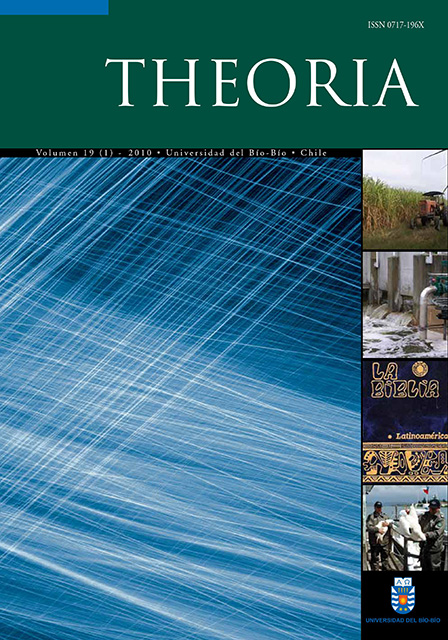La visualización de "colegios invisibles" en las publicaciones político-religiosas de editorial Tierra Nueva (década 1970) y su inserción en discursos de época
Palabras clave:
redes político religiosas, ecumenismo, 1970, colegios invisibles, egonet, political and religious networks, ecumenism, invisible schoolsResumen
El propósito de esta investigación fue determinar casos de redes trasatlánticas construidas a partir de las colaboraciones en coautorías en las publicaciones de la editorial Tierra Nueva, identificar cada una de las egonets en cuanto unidades de análisis epistemológico y “colegios invisibles”, y rastrear redes ecuménicas para reconstruir la perspectiva político-religiosa de la historia de las ideas latinoamericanas, es decir, la configuración de un discurso de época. El método usado para procesar la información consistió en emplear el Generador de nombres “quiénes publicaron libros y artículos de revistas en coautoría con quién”. Se utilizó el software ucinet VI para el análisis de las redes sociales. Con este propósito se analizaron 153 autores, 63 libros publicados por la editorial Tierra Nueva en la década de 1970, como así también los números de las revistas: Fichas Latinoamericanas (1974), Cristianismo y Sociedad (1970-1975) y Revista Cuadernos de Cristianismo y Sociedad (1976-1981). Este procedimiento permitió concluir que sobre las características de las redes entre europeos y americanos en las publicaciones de coautoría en la editorial Tierra Nueva cada egonet es un ejemplo de “proyecciones temáticas” que permiten entender las problemáticas del período en estudio. Las egonets no representan ideas e hipótesis aisladas sino más bien “colegios invisibles” que favorecieron un programa de investigación de época y generaría un discurso de época.
Abstract
The purpose of this research was to determine cases of transatlantic networks constructed from the collaborations of co-authorships, in publications of the Tierra Nueva Publishing House and to identify each of the egonets as units of epistemological analysis and the invisible schools and to track the ecumenical networks in order to reconstruct the political-religious perspective of the history of the Latin-American ideas, that is to say, the configuration of a “time or age discourse”. The method used to process the information consisted of using a Name Generator “of those who published books and magazine articles and their co-authorship”. The software UCINET VI was used for the analysis of the social networks. With this purpose 153 authors were analyzed, 63 books were published by Tierra Nueva publishing house in the 1970s, as well as in a numbers of journals: Latin-American Cards (1974), Christianity and Society (1970-1975) and Notebooks Journals about Christianity and Society (1976-1981). This procedure allowed to conclude characteristics of the networks between Europeans and Americans in the publications of co-authorship in Tierra Nueva Publishing House. Every egonet is an example of “thematic projections” that allows to understand the problematic of the period studied. The egonets do not represent isolated ideas and hypothesis but rather “Invisible schools” that favored a time research program and that would generate a time or age discourse.

